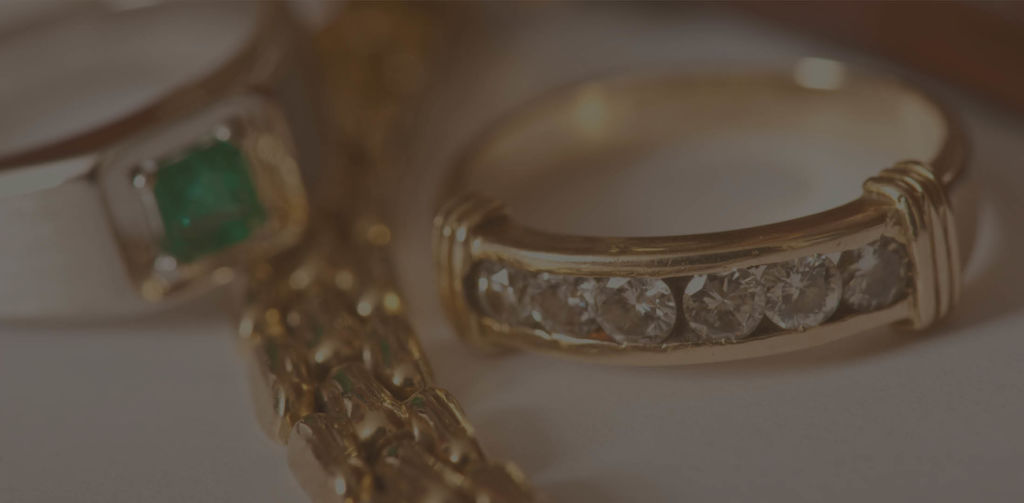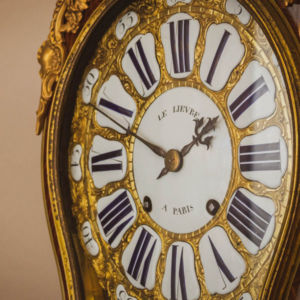![]()
Biedermeier
![]()
Home > Epochen > Biedermeier
In the German-speaking world, Biedermeier is the period between the Congress of Vienna in 1814 and the revolution of 1848.
In the course of the Restoration, the emerging bourgeoisie withdrew from the political into the private sphere. The focus was on domesticity, sociability in a small circle and the private idyll.
From an art-historical perspective, the epoch saw itself as an objective, functional counterpart to the previous magnificent Napoleonic Empire.
FEATURES OF BIEDERMEIER SCHMUCK
The jewellery of the Biedermeier period does not offer a uniform picture. However, as a rule, a reference to classical models is unmistakable.
In terms of style, Biedermeier jewellery was initially still oriented towards classicism, but from the early 1820s onwards the typical geometric shapes, pearl bands and leaf friezes disappeared. Instead, many forms and ornaments of earlier epochs, such as the Gothic, Rococo, Baroque and Renaissance, were rediscovered. In the ornamentation of Biedermeier jewellery, natural motifs, such as flowers and leaves, are also increasingly found again.

The economic circumstances of the time are also reflected in fashion and jewellery production. Since after the wars of liberation against Napoleon, the supply of gold and silver was rather rare, one did not only wear much less jewellery compared to earlier epochs, but also in the production was paid attention to an economical way of manufacturing.
Foam gold, tombac & stones from home

Although gold and silver continued to be used for jewellery production, alloys with very low fineness were used.
A common alloy was about quarter gold, also called 250 gold (250/1000 parts gold), which consists of only 25% real gold.
Goldsmiths began to use techniques to produce large pieces of jewellery in the most economical way.
Foam gold, for example, was used: a very thin gold sheet was placed in the appropriate form and then poured with plaster.
In the Cannetille technique, on the other hand, gold or silver wire was used to form a framework of tendrils and shapes as filigree as possible, which could hold large gemstones.
Biedermeier jewellery is also often light metal jewellery, produced in large quantities by machine pressing. Tombac, a brass alloy without any gold content, was used here.
Domestic stones were increasingly used as gemstones. In Austria mainly Bohemian garnet, but also amethysts and rock crystal are used. Especially in Italy corals were increasingly used as trimmings.
If diamonds were used as gemstones, old cut, the 8/8 cut (single cut) or the 16/16 cut (Swiss cut) were the most common.
HAIR JEWELLERY AS FRIENDSHIP & MOURNING JEWELLERY
Friendship and mourning jewellery made of hair was already common in the 18th century, but in the Biedermeier era it enjoyed great popularity among a wide range of people.
In order to honour the deceased loved ones and, in a certain way, to carry them with you at all times, hair of loved ones or close relatives was included in the making of mourning jewellery. Hair was braided to make bracelets, rings or watch chains, but also medallions in which the hair was artistically framed behind glass were very popular.




JEWELLERY OF THE SECOND BIEDERMEIER
The joy of the Biedermeier style continued even after the revolutions of 1848, which is why jewelry in the Biedermeier style was produced until the 1880s. This later Biedermeier jewellery is then referred to as jewellery from the “Second Biedermeier” or Biedermeier of the second period.
At Antik & Co you will find genuine antique art nouveau jewelry at reasonable prices.
We stock handmade historical jewellery that we have saved from melting down and for whose authenticity we personally guarantee.
Route
ANTIK&Co
Wipplingerstrasse 20
1010 Vienna
Here you can find your individual route from your location to our shop in the city centre of Vienna

